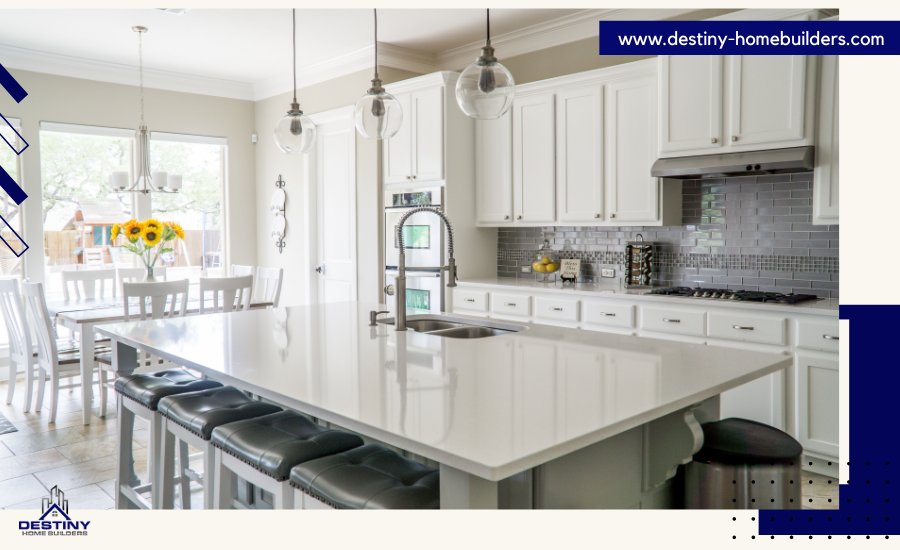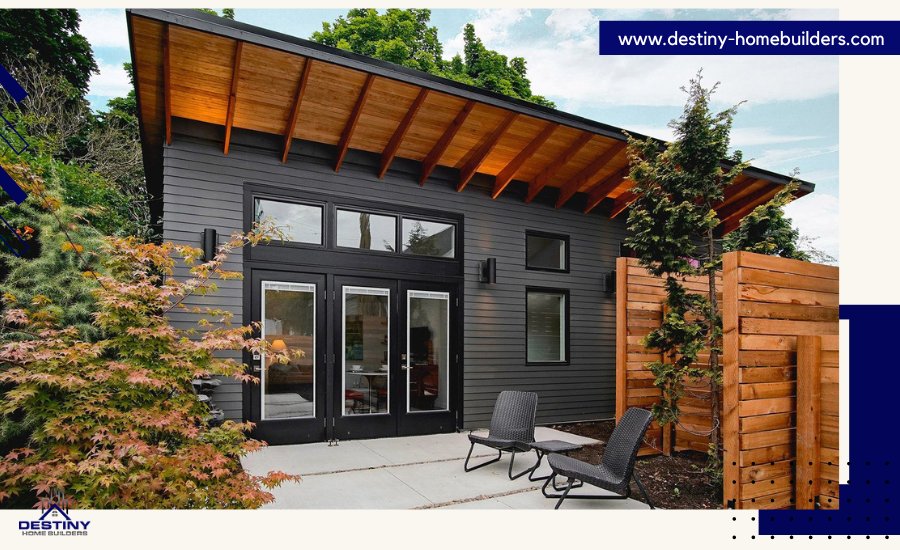
Understanding the difference between renovation and remodel can help you make the best decision for your home improvement project. Each has its benefits and drawbacks, and knowing when to choose one over the other can save you time and money. A renovation typically involves updating or improving an existing space without changing its structure, such as painting walls or replacing flooring. On the other hand, remodeling usually entails altering the structure or layout of a space, such as knocking down a wall to create an open floor plan.
- Renovation vs Remodel: Definitions
- What Renovation Means
- Examples of renovation projects:
- Understanding Remodeling
- Examples of remodeling projects:
- Key Differences Between Renovation and Remodel
- Key points:
- Comparing Renovation, Remodeling, and Restoration
- When to Choose Renovation, Remodeling, or Restoration
- Examples of renovation projects:
- Pros and Cons of Each Approach
- Examples of remodeling projects:
- Common Renovation Tasks
- Easy DIY Renovation Projects
- Examples of renovation projects:
- Renovation Ideas for Every Room
- Examples of remodeling projects:
- Budget-Friendly Renovation Tips
- Key points:
- Common Remodeling Projects
- Popular Home Remodeling Projects
- Examples of renovation projects:
- Remodeling Ideas for Maximum Impact
- Examples of remodeling projects:
- Cost and Time Considerations for Remodeling
- Key points:
- Cost Estimation and Budgeting
- Remodeling and Renovation Cost Estimator Tools
- Examples of renovation projects:
- Budgeting Tips for Renovations
- Examples of remodeling projects:
- How to Estimate Costs for Remodeling Projects
- Key points:
- Home Improvement Goals
- Setting Goals for Your Home Improvement Project
- Examples of renovation projects:
- How to Decide Between Renovation and Remodel
- Examples of remodeling projects:
- Home Improvement Projects That Add Value
- Key points:
- DIY vs Professional Help
- When to DIY and When to Hire a Pro
- Examples of renovation projects:
- Finding the Right Contractor for Your Project
- Examples of remodeling projects:
- Tips for Managing DIY and Professional Projects
- Key points:
- Return on Investment (ROI)
- ROI for Common Renovation Projects
- Examples of renovation projects:
- ROI for Common Remodeling Projects
- Examples of remodeling projects:
- Best Projects for Maximizing Home Value
- Key points:
- Planning and Permits
- Planning Tips for Home Renovation and Remodeling
- Examples of renovation projects:
- Understanding Permits and Regulations
- Examples of remodeling projects:
- Common Permit Requirements for Home Projects
- Key points:
- Final Thoughts on Renovation vs Remodel
- Frequently Asked Questions
- What is the main difference between renovation and remodeling?
- Examples of renovation projects:
- Which is more expensive: renovating or remodeling?
- Examples of remodeling projects:
- Can I do renovation projects myself?
- Key points:
- How do I know if I need a permit for my project?
- Consider renovation if:
- Consider remodeling if:
- Consider restoration if:
- What are the best home improvement projects for increasing home value?
- Pros and cons of renovation:
- Pros and cons of remodeling:
- Pros and cons of restoration:
- Call Destiny Home Builders for Expert Advice
Knowing the distinctions between these two types of projects is crucial for effective planning and budgeting. Whether you aim to update your home's appearance, improve its functionality, or increase its value, understanding the specific goals and requirements of renovation versus remodel will guide you in making informed choices. This blog post will provide a comprehensive comparison, covering definitions, examples, costs, pros and cons, and more, to help you decide which option is best for your complete home remodeling project.

Renovation vs Remodel: Definitions
To start, let's clearly define what renovation and remodeling mean. These terms are often used interchangeably, but they refer to different types of projects. Knowing these definitions can help you communicate more effectively with contractors and make more informed decisions about your home improvement projects.
What Renovation Means
Renovation involves updating or improving a part of your home without changing its structure. This can include cosmetic changes and minor repairs. Renovations are typically focused on refreshing or restoring the old appearance of your home and the functionality of a space.
Examples of renovation projects:
- Painting walls to give a fresh look
- Replacing old flooring with new materials
- Updating kitchen cabinets with new paint or finishes
- Installing new light fixtures to enhance lighting
These projects are usually less invasive and can often be completed relatively quickly and inexpensively compared to remodeling. They are ideal for homeowners looking to make small, impactful changes without a major overhaul.
Understanding Remodeling
Remodeling involves changing the structure or layout of a space. This can mean adding new rooms, changing the floor plan, or significantly altering the look and feel of a room. Remodeling projects are typically more complex and require more planning and investment.

Examples of remodeling projects:
- Knocking down walls to create an open floor plan in the living area
- Adding a new bathroom to increase the home's functionality
- Extending the kitchen space to create a more modern, spacious area
- Converting a basement into a livable area such as a family room or guest suite
Remodeling projects often require permits and professional help, as they involve structural changes that can affect the safety and stability of the home. They are ideal for homeowners looking to make significant changes to improve their home's layout and functionality.
Key Differences Between Renovation and Remodel
Understanding the differences between renovation and remodel can help you choose the right approach for your project. Renovations are typically less expensive and less invasive, while remodeling projects can be more complex and costly.
Key points:
- Renovation updates the existing space without major changes to its structure
- Remodeling changes the structure or layout of the space
- Renovation projects are usually quicker and cheaper
- Remodeling can significantly alter the function and look of a space
- Renovations often focus on cosmetic improvements, while remodeling can involve structural changes
By understanding these key differences, you can better plan your home improvement project and set realistic expectations for the time, cost, and scope involved.
Comparing Renovation, Remodeling, and Restoration
It's important to know the differences between renovation and remodel and how these compare to restoration projects. Each has a unique purpose and application. Restoration focuses on preserving a space's historical and architectural integrity, often bringing it back to its original condition.

When to Choose Renovation, Remodeling, or Restoration
Choosing between renovation, remodeling, and restoration depends on your goals and the current state of your home. Renovation is great for minor updates, remodeling is ideal for significant changes, and restoration is perfect for preserving historical elements.
Consider renovation if:
- You want to update outdated features for a fresh look
- Your budget is limited, and you prefer cost-effective improvements
- You prefer minimal disruption to your daily life
Consider remodeling if:
- You need more space or want to change the layout
- You are willing to invest more time and money for significant changes
- You plan to stay in your home long-term and want to customize it to your needs
Consider restoration if:
- Your home has historical value and you want to preserve its original features
- You are committed to using period-appropriate materials and techniques
- You are restoring damaged elements to their original state
Pros and Cons of Each Approach
Each approach has its own set of advantages and disadvantages. Understanding these can help you make a well-informed decision.
Pros and cons of renovation:
- Pros: Usually cheaper, quicker, and less invasive; can refresh the look of your home without major changes.
- Cons: Limited to cosmetic changes; may not significantly increase home value.
Pros and cons of remodeling:
- Pros: Can create more space, modernize your home, and increase its value; allows for significant customization.
- Cons: More expensive, longer timelines, may require permits and professional help.
Pros and cons of restoration:
- Pros: Preserves historical value, can be a unique selling point; maintains the architectural integrity of the home.
- Cons: It can be costly, may require specialized skills and materials, and often involves strict regulations.
Understanding these pros and cons will help you weigh your options and choose the best approach for your home improvement project.
Common Renovation Tasks
Renovation projects are often simpler and can be done by homeowners themselves. These tasks are great for updating the look of your home without major structural changes. Renovations can make a significant impact with relatively little time and money.

Easy DIY Renovation Projects
Many renovation projects can be tackled by homeowners with basic DIY skills. These projects are cost-effective and can be completed over a weekend.
Examples of easy DIY renovations:
- Painting walls or cabinets to give a fresh look
- Installing new light fixtures to improve lighting
- Replacing old hardware on doors and cabinets for a quick update
- Adding new trim or molding to enhance the aesthetic appeal
These projects require minimal tools and expertise, making them accessible to most homeowners. They can also provide a sense of accomplishment and personalization to your home.
Renovation Ideas for Every Room
Renovations can be done in any room of the house. From the kitchen to the bathroom, small updates can make a big difference in appearance and functionality.
Kitchen renovation ideas:
- Update countertops to modern materials like granite or quartz
- Reface cabinets with new doors or a fresh coat of paint
- Install a new backsplash to add color and texture
Bathroom renovation ideas:
- Replace old fixtures with modern ones for an updated look
- Install new tiles on the floor or walls to refresh the space
- Update the vanity and mirror for a more contemporary feel
These ideas can help you transform your home room by room, making each space more enjoyable and functional.
Budget-Friendly Renovation Tips
You don't need a large budget to make impactful changes. There are many ways to renovate on a budget without compromising on quality or style.
Tips for budget-friendly renovations:
- Prioritize high-impact areas like kitchens and bathrooms, where updates are most noticeable.
- Use paint to refresh and update spaces; it's cost-effective and can make a big difference.
- Shop for deals on materials and fixtures, looking for sales and discounts to save money.
- Consider DIY projects to save on labor costs, but be sure to take on tasks that match your skill level.
These tips can help you achieve a significant transformation in your home while staying within your budget.
Common Remodeling Projects
Remodeling projects involve more extensive changes to the structure or layout of your home. These projects can significantly enhance your living space and increase your home's value. Remodeling often requires professional help and a larger budget, but the results can be transformative.
Popular Home Remodeling Projects
Remodeling projects can vary widely in scope and complexity. Here are some of the most popular remodeling projects that homeowners undertake to improve their homes.

Examples of popular remodeling projects:
- Kitchen remodels: Knocking down walls to create an open floor plan, installing new cabinets and countertops, and adding a kitchen island.
- Bathroom remodels: Adding a new bathroom or expanding an existing one, installing a new shower or bathtub, updating fixtures and tiles.
- Basement conversion: Turning an unfinished basement into a living area, such as a family room, guest suite, or home office.
- Room additions: Building new rooms or extensions, such as a sunroom, additional bedroom, or a larger living area.
These projects can drastically change the functionality and aesthetics of your home, making it more enjoyable and suitable for your needs.
Remodeling Ideas for Maximum Impact
When planning a remodeling project, it's important to choose ideas that will have the greatest impact on your home's appearance and functionality.
Ideas for impactful remodeling:
- Open floor plans: Removing walls to create a more spacious and modern living area.
- Energy-efficient upgrades: Installing new windows, doors, and insulation to improve energy efficiency.
- Modernizing kitchens and bathrooms: Upgrading to smart appliances, fixtures, and finishes to create a more contemporary look.
- Outdoor living spaces: Adding decks, patios, or outdoor kitchens to enhance your home's exterior and create more usable space.
These ideas can help you maximize the benefits of your remodeling project, making your home more attractive and functional.
Cost and Time Considerations for Remodeling
Remodeling projects can be more costly and time-consuming than renovations. Understanding the potential costs and timelines can help you plan more effectively.
Cost considerations:
- Materials and finishes: High-quality materials and finishes can significantly increase costs, but they also add value and durability.
- Labor costs: Hiring professionals for structural changes, plumbing, electrical work, and other specialized tasks.
- Permits and inspections: Required for many remodeling projects, adding to the overall cost.
Time considerations:
- Project scope: Larger projects, like room additions, can take several months to complete.
- Planning and design: Time needed for planning, obtaining permits, and finalizing designs before construction begins.
- Construction phase: Time required for actual construction, including potential delays due to unforeseen issues.
By understanding these factors, you can set realistic expectations for your remodeling project and ensure you have the necessary resources to complete it successfully.
Cost Estimation and Budgeting
Accurate cost estimation and budgeting are crucial for any home improvement project. Whether you're renovating or remodeling, knowing the potential costs and how to manage your budget can help you avoid overspending and ensure your project stays on track.

Remodeling and Renovation Cost Estimator Tools
There are various tools available that can help you estimate the costs of your renovation or remodeling project. These tools can provide a rough estimate based on the type of project, size, and materials.
Popular cost estimator tools:
- Online calculators: Websites that offer cost calculators for specific projects, like kitchen remodels or bathroom renovations.
- Contractor estimates: Professional contractors can provide detailed estimates based on their experience and knowledge of local costs.
- Budgeting apps: Apps designed to help homeowners track expenses and stay within their budget.
Using these tools can give you a better understanding of the potential costs and help you plan your budget accordingly.
Budgeting Tips for Renovations
Budgeting for a renovation project requires careful planning and consideration of all potential expenses. Here are some tips to help you create an effective budget for your renovation.
Tips for budgeting renovations:
- Set a realistic budget: Determine how much you can afford to spend and stick to it.
- Prioritize projects: Focus on high-impact areas that will give you the most value for your money.
- Plan for contingencies: Set aside a portion of your budget for unexpected expenses.
- Shop smart: Look for sales, discounts, and alternative materials to save money without sacrificing quality.
These tips can help you manage your renovation budget effectively and ensure you get the best results for your investment.
How to Estimate Costs for Remodeling Projects
Remodeling projects often have more variables and potential hidden costs than renovations. Here's how to estimate the costs of your remodeling project accurately.
Steps to estimate remodeling costs:
- Define the scope: Clearly outline the extent of the project, including all structural changes and updates.
- Research materials: Get prices for all materials and finishes you plan to use.
- Get multiple quotes: Obtain estimates from several contractors to compare costs and services.
- Include permits and fees: Factor in the cost of permits, inspections, and any additional fees required by local regulations.
- Plan for surprises: Allocate a portion of your budget for unexpected issues that may arise during construction.
By following these steps, you can create a comprehensive budget for your remodeling project and avoid financial surprises.
Home Improvement Goals
Setting clear goals for your home improvement project is essential for achieving the desired results. Whether you're renovating or remodeling, understanding your objectives will help you make better decisions and prioritize your efforts.
Setting Goals for Your Home Improvement Project
Before starting any home improvement project, it's important to define your goals. This will guide your decisions and ensure that the final result meets your needs and expectations.
Questions to consider:
- What is the purpose of the project? Are you updating for personal enjoyment, increasing functionality, or preparing to sell?
- What is your budget? How much are you willing to spend on the project?
- What is your timeline? When do you need the project to be completed?
- What are your must-haves? Identify the essential, non-negotiable elements.
Setting clear goals will help you stay focused and make informed decisions throughout the project.
How to Decide Between Renovation and Remodel
Choosing between renovation and remodeling depends on your specific needs and goals. Here are some factors to consider when making your decision.
Factors to consider:
- Current condition of your home: Assess whether the existing structure can support your desired changes.
- Budget constraints: Determine if you can afford the more extensive costs of remodeling.
- Time availability: Consider the time required for each type of project and how it fits into your schedule.
- Desired outcome: Decide if you need a complete transformation or if minor updates will suffice.
By weighing these factors, you can choose the best approach for your home improvement project.
Home Improvement Projects That Add Value
Some home improvement projects can significantly increase the value of your home. Here are a few projects known for their high return on investment (ROI).
High-ROI projects:
- Kitchen remodels: Modernizing the kitchen with new appliances, countertops, and cabinets.
- Bathroom updates: Upgrading fixtures, and tiles, and adding new features like a walk-in shower.
- Energy-efficient improvements: Installing new windows, insulation, and energy-efficient appliances.
- Outdoor enhancements: Adding a deck, patio, or landscaping to improve curb appeal.
These projects can make your home more attractive to potential buyers and increase its market value.
DIY vs Professional Help
Deciding whether to tackle a home improvement project yourself or hire a professional can be challenging. Each option has its benefits and drawbacks, and the best choice depends on the project's complexity, your skills, and your budget.

When to DIY and When to Hire a Pro
Some home improvement tasks are perfect for DIY enthusiasts, while others are best left to professionals. Knowing the difference can save you time, money, and frustration.
When to DIY:
- Painting: A straightforward task that requires minimal tools and skills.
- Installing fixtures: Replacing light fixtures, faucets, or cabinet hardware.
- Basic landscaping: Planting flowers, trimming bushes, and adding mulch.
When to hire a professional:
- Electrical work: For safety and compliance with building codes.
- Plumbing: To avoid potential water damage and ensure proper installation.
- Structural changes: Removing walls, adding rooms, or making significant alterations.
Understanding the limits of your DIY skills and knowing when to call in a pro can ensure your project is completed safely and effectively.
Finding the Right Contractor for Your Project
Hiring the right contractor is crucial for the success of your home improvement project. A good contractor can ensure quality work, stay within budget, and complete the project on time.
Tips for finding a contractor:
- Get recommendations: Ask friends, family, and neighbors for referrals.
- Check credentials: Verify licenses, insurance, and certifications.
- Read reviews: Look at online reviews and ratings to gauge customer satisfaction.
- Get multiple quotes: Compare estimates from several contractors to find the best fit.
- Ask for references: Speak with past clients to assess the contractor's work quality and reliability.
Taking these steps can help you find a trustworthy contractor who meets your needs and expectations.
Tips for Managing DIY and Professional Projects
Whether you're handling a project yourself or working with a contractor, effective project management is key to success. Here are some tips to keep your project on track.
For DIY projects:
- Plan: Create a detailed plan and timeline before starting.
- Stay organized: Keep tools and materials organized to avoid delays.
- Take your time: Don't rush; ensure each step is done correctly.
For professional projects:
- Communicate clearly: Maintain open communication with your contractor.
- Set expectations: Clearly define the project scope, budget, and timeline.
- Monitor progress: Regularly check in on the project's status and address any issues promptly.
These tips can help ensure your home improvement project runs smoothly, whether you're doing it yourself or working with a professional.
Return on Investment (ROI)
Understanding the potential return on investment (ROI) of your home improvement project can help you make more informed decisions. Some projects offer higher returns than others, making them more worthwhile if you plan to sell your home in the future.
ROI for Common Renovation Projects
Renovation projects often provide a good ROI, as they typically involve cosmetic updates that make the home more appealing to buyers.
High-ROI renovation projects:
- Painting: A fresh coat of paint can make a room look new and updated.
- New flooring: Replacing old carpet or worn-out flooring can enhance the look and feel of your home.
- Kitchen updates: Minor kitchen renovations, such as new countertops or updated cabinets, can add significant value.
These projects are relatively low-cost and can significantly improve the appearance of your home, making it more attractive to potential buyers.
ROI for Common Remodeling Projects
Remodeling projects can also offer a good ROI, especially if they add functionality or modernize the home.
High-ROI remodeling projects:
- Kitchen remodels: Major kitchen remodels, including new appliances and an updated layout, can greatly increase home value.
- Bathroom remodels: Adding a new bathroom or updating an existing one with modern fixtures and finishes.
- Basement conversions: Turning an unfinished basement into a functional living space, such as a family room or guest suite.
While these projects are more costly than renovations, they can provide a significant return by making the home more functional and appealing.
Best Projects for Maximizing Home Value
To maximize your home's value, focus on projects that offer the highest return on investment. These projects not only enhance your living space but also make your home more attractive to buyers.
Top projects for maximizing value:
- Energy-efficient upgrades: Installing new windows, insulation, and energy-efficient appliances can reduce utility costs and attract eco-conscious buyers.
- Curb appeal enhancements: Improving your home's exterior with landscaping, a new front door, or a fresh coat of paint can create a great first impression.
- Outdoor living spaces: Adding a deck, patio, or outdoor kitchen can extend your living space and provide a great area for entertaining.
Focusing on these high-ROI projects can help you get the most value from your home improvement investments.
Planning and Permits
Proper planning and obtaining the necessary permits are crucial steps in any home improvement project. This ensures that your project complies with local regulations and is completed safely and correctly.
Planning Tips for Home Renovation and Remodeling
Effective planning is key to the success of any renovation or remodeling project. Here are some tips to help you plan effectively.

Steps for planning:
- Define your goals: Clearly outline what you want to achieve with your project.
- Set a budget: Determine how much you can afford to spend and allocate funds accordingly.
- Create a timeline: Establish a realistic timeline for project completion, considering potential delays.
- Research materials: Choose materials that fit your budget and style preferences.
Planning tools:
- Project management apps: Use apps like Trello or Asana to keep track of tasks and deadlines.
- Budgeting tools: Utilize spreadsheets or budgeting apps to monitor expenses and stay within budget.
Proper planning can help you avoid common pitfalls and ensure your project runs smoothly from start to finish.
Understanding Permits and Regulations
Many home improvement projects require permits to ensure they meet local building codes and safety standards. Understanding the permit process is essential for compliance and avoiding potential fines.
Common projects requiring permits:
- Structural changes: Adding or removing walls, and building extensions.
- Electrical work: Installing new wiring, and upgrading electrical panels.
- Plumbing work: Adding new plumbing fixtures, and rerouting pipes.
- HVAC installations: Installing new heating or cooling systems.
Steps to obtain permits:
- Check local regulations: Research permit requirements in your area.
- Submit applications: Complete and submit permit applications to your local building department.
- Schedule inspections: Arrange for inspections at various stages of the project to ensure compliance.
Understanding and following permit requirements can help you avoid legal issues and ensure your project is completed safely.
Common Permit Requirements for Home Projects
Permit requirements can vary depending on the scope and location of your project. Here are some common requirements you may encounter.
- Documentation: You may need to provide detailed plans, including drawings and specifications.
- Fees: Permit fees vary based on the project size and scope.
- Inspections: Multiple inspections may be required, including pre-construction, during construction, and final inspections.
Tips for handling permits:
- Consult professionals: Contractors and architects can help navigate the permit process.
- Stay organized: Keep all permit-related documents in one place for easy reference.
- Plan for delays: Permit approvals can take time, so factor this into your project timeline.
By understanding these common requirements, you can ensure your project complies with local regulations and proceeds without unnecessary delays.
Final Thoughts on Renovation vs Remodel
Choosing between renovation and remodel depends on your goals, budget, and the current state of your home. Renovations are ideal for making aesthetic updates and minor improvements, while remodeling is better suited for major changes that alter the structure or layout of your space. Both approaches have their benefits and can significantly enhance your home's functionality and value.
By understanding the differences and planning accordingly, you can ensure your home improvement project meets your needs and expectations. Whether you're looking to refresh your home's look or undertake a major transformation, careful planning and execution are key to achieving the best results.
Frequently Asked Questions
What is the main difference between renovation and remodeling?
Renovation involves updating or improving a part of your home without changing its structure, like painting walls or replacing flooring. Remodeling changes the structure or layout of a space, such as adding a new room or altering the floor plan.
Which is more expensive: renovating or remodeling?
Generally, remodeling is more expensive because it involves structural changes and may require permits and professional help. Renovations are usually less costly since they focus on cosmetic improvements and minor repairs.
Can I do renovation projects myself?
Yes, many renovation projects are DIY-friendly, such as painting, replacing fixtures, and updating hardware. However, some tasks might require professional help, especially if they involve electrical or plumbing work.
How do I know if I need a permit for my project?
Permit requirements vary by location and the scope of your project. Generally, structural changes, electrical work, and major plumbing updates require permits. Check with your local building department to determine what permits you need.
What are the best home improvement projects for increasing home value?
High-ROI projects include kitchen and bathroom remodels, adding energy-efficient upgrades, and enhancing curb appeal with landscaping or new exterior paint. These improvements can make your home more attractive to potential buyers and increase its market value.
Call Destiny Home Builders for Expert Advice
Ready to start your renovation or remodeling project? Contact Destiny Home Builders at (619) 514-0085 for professional advice and high-quality service in San Diego, CA. Our team is here to help you transform your home.





Comments: